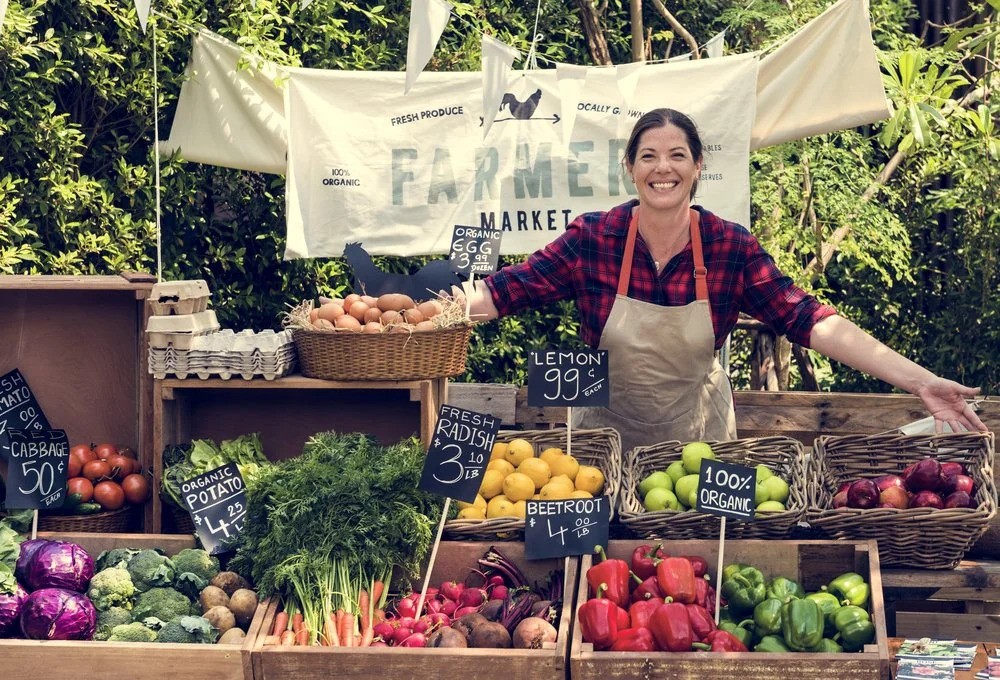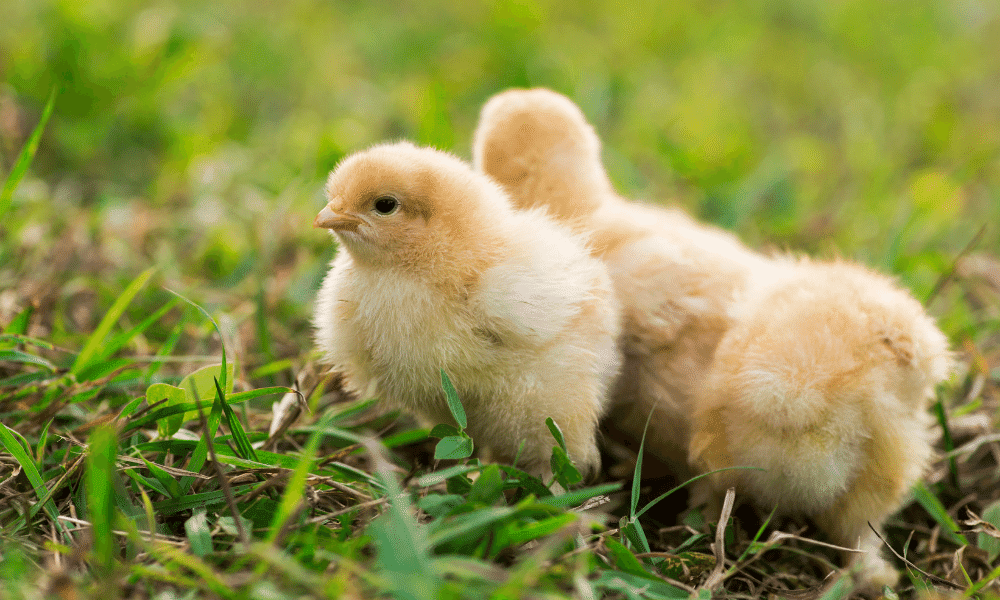The Serama Chicken: Owning the Smallest Chicken Breed
Serama chickens are known for their charming personalities and petite size, they have captured the hearts of poultry enthusiasts around the globe. Originating from Malaysia, these delightful birds are not just a pretty face; they have a rich history and unique characteristics that make them a favorite among chicken keepers. In this blog, we will explore everything you need to know about Serama chickens, from their origins to their care requirements.
Serama Breed Origin
The Serama chicken, often referred to as the "Serama," hails from Malaysia, where it is thought to have been developed in the late 20th century. This breed is believed to have descended from various bantam breeds, resulting in its small size and unique appearance. The Malaysian Serama was initially bred for its beauty and companionship, and it quickly gained popularity in the poultry community. Today, Serama chickens are recognized worldwide, with dedicated breeding programs aimed at preserving their distinct traits.
The Serama Chicken Rooster
Serama chicken roosters are known for their friendly and sociable personalities, often displaying a charming mix of curiosity and confidence. They tend to be more docile than many other rooster breeds, making them excellent companions for both experienced poultry keepers and beginners.
The prime age of fertility for Serama roosters typically begins around 5 to 6 months of age, and they can remain fertile for about 2 to 3 years, depending on their health and living conditions. During this time, a fertile Serama rooster can successfully mate with multiple hens, contributing to the continuation of this delightful breed.
Malaysian Serama vs the American Serama: What's the difference?
The Malaysian Serama and the American Serama are two distinct varieties of the beloved Serama breed, each showcasing unique traits that appeal to different poultry enthusiasts
The Malaysian Serama, often called the Malaysian Serama Bantam chickens, are celebrated for their petite size and refined appearance. These charming birds have a delicate build and a proud, upright posture that highlights their elegance. The Malaysian Serama Rooster is particularly striking, showcasing vibrant plumage and a confident demeanor. Known for their spirited personality and affectionate nature, Malaysian Serama Bantams typically range in price from $20 to $100, depending on age, color, and lineage.
The American Serama on the other hand has been selectively bred for specific traits, resulting in slightly larger birds with a broader range of feather types and colors. While they share the same lively spirit as their Malaysian counterparts, American Serama Bantam Chickens cater to diverse preferences among enthusiasts. Pricing for American Serama Bantams generally falls between $30 and $150, influenced by similar factors. Both varieties offer unique and rewarding experiences for poultry lovers.
Marketplace
You might also be interested in...

Shop for chickens, livestock or other farm goods

About Farm Expo Events

Sell Your Chicks and Eggs
Serama Breed Characteristics
Serama chickens are known for their small stature, making them one of the smallest chicken breeds in the world. Adult Serama chicken size typically ranges from 13 to 19 ounces, with Serama hens being slightly smaller than Serama roosters. They have a compact body, short legs, and a distinctive upright posture. Their feathers are often soft and fluffy, adding to their adorable appearance. Serama chickens come in various colors and patterns, making them visually appealing to collectors and enthusiasts alike.
The Frizzle Serama
The Frizzle Serama chicken is a captivating variation of the Serama breed, known for its unique feathering that curls outward, giving it a distinctive and eye-catching appearance. These birds have feathers that create a frizzled effect, making them look almost like living, fluffy little clouds. This quirky feather trait not only adds to their charm but also sets them apart from other Serama varieties. Frizzle Seramas come in various colors and patterns, and their playful demeanor makes them a favorite among poultry lovers. Frizzled Serama chicken's delightful looks and friendly personalities make the Serama frizzle chickens a wonderful addition to any flock.
Image source: Christina on Roobeez
The Silkied Serama
A Silkied Serama is a unique variation of the Serama breed, known for its smooth, fluffy plumage that resembles silk, similar to the feathers of a Silkie chicken. This feather structure occurs due to a genetic mutation affecting the feather barbs, preventing them from locking together as they do in normal-feathered birds. As a result, the feathers of a Silkied Serama appear soft, wispy, and more delicate, giving the bird a distinct appearance.
The silkied trait in Seramas follows an autosomal recessive inheritance pattern, meaning both parent birds must carry the silkied gene to produce offspring with silkied feathers. When two carriers of the silkied gene are bred, about 25% of the offspring will express the silkied trait, 50% will carry the gene without expressing it, and 25% will be normal-feathered without carrying the mutation.
This combination of the Serama’s small, upright stature and the silkied feathering creates a bird that is not only charming in appearance but also highly sought after by poultry enthusiasts for its unique look and sweet disposition. Breeding Silkied Seramas can be challenging due to the need for careful genetic pairing, but the result is a beautiful bird with a one-of-a-kind aesthetic.
Silkie Serama Chicken vs Silkied Serama Chicken: Silkied Serama are sometimes confused with Silkie Serama chickens, which is actually a hybrid between a Serama and a Silkie, but these are not the same. True Silkied Seramas are pure Seramas with this feather trait, not crossbreeds.
Serama Breed Purpose
Serama chickens are primarily kept for ornamental purposes, they also make excellent pets due to their friendly and sociable nature. They are not typically raised for meat or egg production, but they do lay small eggs known as Serama chicken eggs. These eggs are often used for hatching new Serama chicks, contributing to the ongoing popularity of Serama breeding.
Serama Breed Average Lifespan
The average lifespan of a Serama chicken is around 5 to 10 years, depending on their care and living conditions. With proper attention and a healthy environment, Seramas can live long, fulfilling lives.
Best Care and Housing for Serama Chickens
Serama chickens require a safe and comfortable living space. A well-ventilated coop with adequate space is essential, as a Serama chicken can be sensitive to overcrowding. Providing nesting boxes and perches will help them feel secure. It's important to keep their living area clean to prevent illness and ensure their well-being.
Ideal Weather and Temperature for Serama
Serama chickens are relatively hardy but prefer moderate temperatures. They thrive in temperatures between 60°F and 75°F. In colder climates, it's crucial to provide adequate shelter and warmth, as Seramas can be susceptible to extreme weather conditions. During hot weather, ensure they have access to shade and fresh water to stay hydrated.
Serama Nutritional Requirements
A balanced diet is vital for the health of a Serama chicken. They should be fed high-quality poultry feed formulated for bantams, along with fresh fruits and vegetables. It's essential to provide grit to aid digestion and ensure they have access to clean water at all times. Regularly supplementing their diet with protein sources can also promote healthy growth and egg production.
Serama Common Illness or Sickness
Like all chickens, a Serama chicken can be prone to certain illnesses. Common health issues include respiratory infections, mites, and worms. Regular health checks and vaccinations can help prevent these problems. It's essential to monitor their behavior and appearance for any signs of illness, such as lethargy or changes in appetite, to keep your flock of Serama bantam healthy.
Serama Baby Chicks and Serama Eggs
On average, a Serama hen lays about 3 to 6 eggs per clutch, typically every 2 to 3 days during the laying season. The frequency of egg-laying can vary based on factors such as age, health, and environmental conditions. Serama eggs are small, usually weighing around 1 ounce, making them significantly smaller than standard chicken eggs. Serama chicken eggs are colorful ranging from white to light brown, with some Serama hens producing eggs that have a slight tint, adding to the visual appeal of these delightful birds.
When it comes to broody behavior, Serama hens can exhibit a strong instinct to incubate their eggs. While not all Serama hens will go broody, those that do will often sit on their eggs diligently, displaying protective behaviors. This broody nature can be beneficial for those interested in hatching Serama chicks, as a broody hen will provide warmth and care for the eggs. However, it's essential to monitor the hen during this time to ensure she remains healthy and does not neglect her own needs.
The average Serama chickens brood around 3 to 6 eggs per clutch. This can vary depending on the individual Serama hen and her Serama breeding history. Serama chicks are known for their small size and adorable appearance, making them a joy to raise.
Caring for Serama chicks requires special attention due to their small size and delicate nature. Newly hatched Serama chicks should be kept in a warm, draft-free environment with a temperature of around 95°F for the first week, gradually decreasing the temperature as they grow. Providing a suitable brooder with soft bedding, such as pine shavings, is crucial for their comfort. Additionally, Serama chicks should have access to high-quality chick starter feed and fresh water at all times. It's important to ensure that the feed is appropriate for their small size to prevent choking. Regular monitoring of their health is essential to ensure they thrive.
Average Cost of Babies and Full-Grown Seramas
The average cost of a Serama chick can range from $5 to $20, depending on the breeder and the chick's lineage. A Serama chicken price can vary significantly based on their quality and Serama breeding. For a full-grown Serama chicken, on average, you can expect to pay between $50 to $150 for Serama chicken for sale, making them a worthwhile investment for any poultry enthusiast. For those interested in purchasing these delightful birds, various breeders and online marketplaces offer Serama for sale. When searching for American Serama Bantam or Malaysian Serama Bantam chickens, it's essential to consider reputable sources who prioritize the health and quality of their birds.
Serama Fun Facts
Tiny Titans: Despite their small size, Serama chickens have big personalities and are known for their bold and curious nature.
Show Stoppers: Serama chickens are popular in poultry shows, where they are judged not only on their appearance but also on their temperament.
Vocal Birds: Seramas are quite vocal and will often "talk" to their owners, making them entertaining companions.
Fashionistas: With their variety of colors and feather patterns, Serama chickens can be seen as the fashion icons of the poultry world.
Cuddle Buddies: Many Serama chicken owners report that their birds enjoy being held and cuddled, making them great pets for families.
Serama chickens are a delightful addition to any poultry enthusiast's flock. With their charming personalities, unique characteristics, and manageable care requirements, they make excellent pets and companions. Whether you're interested in Serama breeding or simply want to enjoy the company of these adorable birds, the Serama chicken is sure to bring joy to your life.
Keywords: seramas chicken, seramas chickens
Frequently Asked Questions About Easter Egger Chickens
-
The average Serama chicken size ranges from 13 to 19 ounces, making them one of the smallest chicken breeds in the world. Despite their petite stature, these little birds have big personalities and a proud posture, often described as “chest out, head up,” giving them the look of a tiny warrior.
-
A typical Serama’s lifespan is between 5 to 10 years with proper care. With attention to their health, nutrition, and environment, some Seramas have been known to live even longer, making them a delightful long-term companion for poultry enthusiasts. Their longevity also makes them popular among breeders and show enthusiasts looking for birds with lasting appeal.
-
Yes! Serama chickens are known for their friendly, calm, and sociable nature, making them excellent pets for both children and adults. Many owners say these birds love to be held, cuddled, and carried around. Thanks to their easygoing temperament and small size, Seramas are ideal for backyard coops and even indoor environments, as long as they have proper care.
-
A balanced diet for a Serama includes high-quality poultry feed formulated for bantams, along with fresh vegetables and fruits as occasional treats. These little birds may also benefit from extra protein sources like mealworms, especially during molting. Providing grit is essential for digestion, and ensuring constant access to clean water helps keep them healthy.
-
A Serama hen typically lays 3 to 6 eggs per clutch, although egg-laying can vary with seasons and the hen’s environment. While their eggs are small compared to standard breeds, they are prized for their smooth texture and attractive light colors, making them a charming addition to any egg basket.
-
You can find Serama chickens for sale through local breeders, poultry shows, and reputable online marketplaces like Roobeez. It’s essential to connect with trusted breeders who prioritize the health and well-being of their birds. Attending poultry shows can also be a great way to meet breeders and find high-quality Seramas for your flock.
-
Like all poultry, Seramas can be prone to certain health issues, including respiratory infections, mites, and internal parasites such as worms. Due to their small size, they are also more sensitive to temperature changes and stress, which can affect their immune system. Regular health checks, proper nutrition, and maintaining a clean coop are essential for keeping them healthy.
-
Yes, Serama chickens thrive in a clean, well-ventilated coop with ample space. Since they are small and active, it’s essential to avoid overcrowding. Nesting boxes and perches should be appropriately sized to prevent injury. In colder climates, extra care is needed to provide warmth, as Seramas are more sensitive to cold temperatures than larger breeds.
-
The average cost of a full-grown Serama chicken ranges from $50 to $150, depending on the bird’s lineage, color, and show quality. Birds from reputable breeders or with award-winning bloodlines can be more expensive, but the investment is worth it for those looking to add high-quality Seramas to their flock.
-
Yes, Serama chickens can coexist with other breeds, but it’s essential to monitor interactions closely. Due to their small size, they may be more vulnerable to bullying from larger or more aggressive birds. It’s a good idea to introduce new birds gradually and ensure everyone has enough space to reduce the chances of conflict.
You might also be interested in…


















Discover farmers markets near you with Roobeez! Explore local events, find seasonal and weekly markets, and shop fresh produce and handmade goods on our marketplace. Contribute to our growing directory by adding your favorite markets and community events. Supporting local has never been easier!